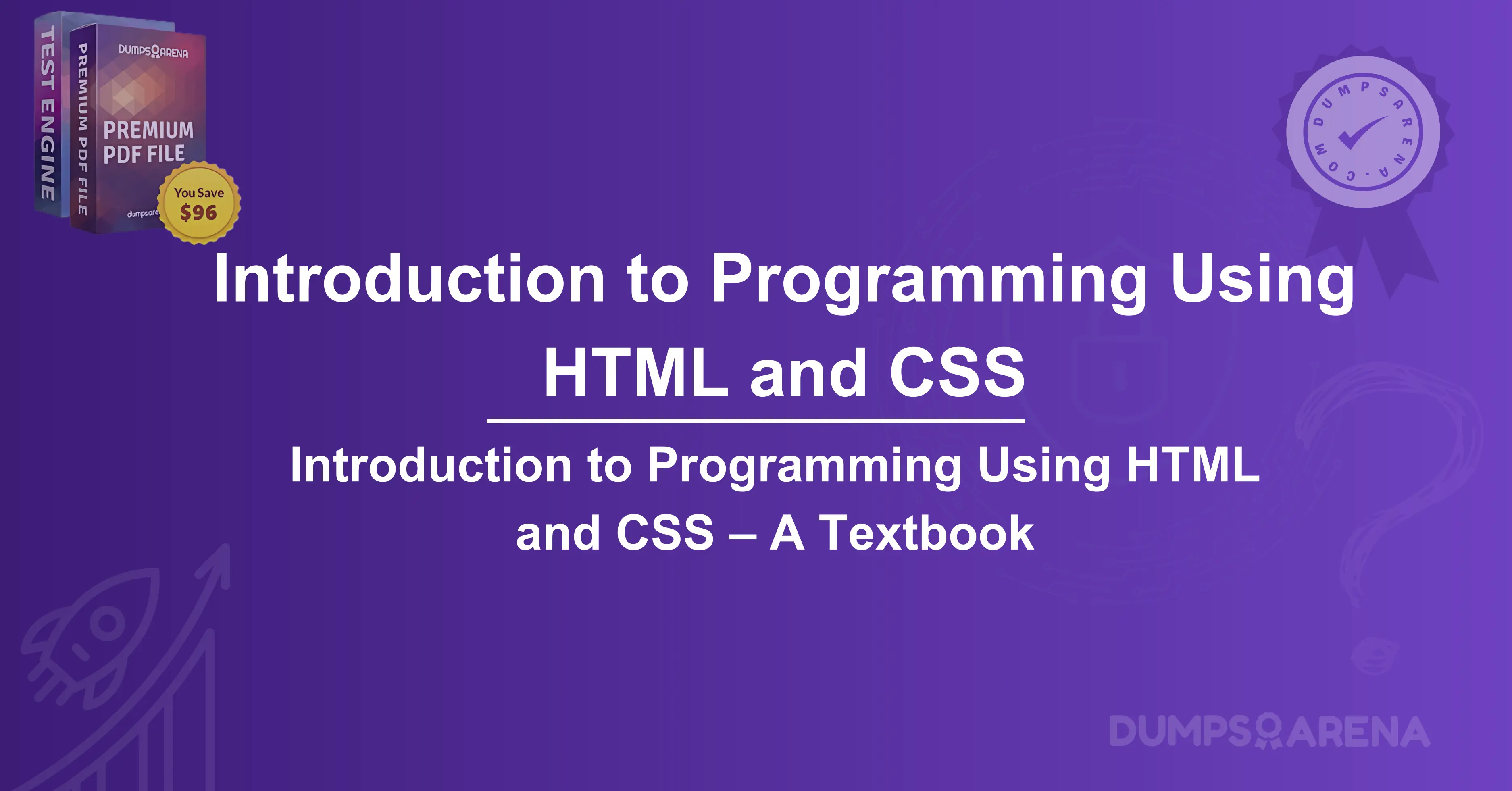Introduction to Programming Using HTML and CSS
1. Introduction to Programming
What is Programming?
Programming is the process of giving instructions to a computer to perform specific tasks. It involves writing code in programming languages that the computer can understand and execute. Programming is used in various fields, including web development, mobile apps, artificial intelligence, and more.
Why Learn Programming?
- High Demand for Developers: Programming skills are highly sought after in the job market.
- Problem-Solving Skills: Coding improves logical thinking and creativity.
- Build Your Own Projects: From websites to apps, programming allows you to bring ideas to life.
Introduction to Web Development
Web development involves creating websites and web applications. It consists of:
- Frontend Development: What users see (HTML, CSS, JavaScript).
- Backend Development: Server-side logic (Python, PHP, Node.js).
- Full-Stack Development: Both frontend and backend.
Introduction to Programming Using HTML and CSS are the foundation of frontend development.
2. Getting Started with HTML
What is HTML?
HTML (HyperText Markup Language) is the standard language for Microsoft creating web pages. It defines the structure of a webpage using tags.
Structure of an HTML Document
```html
<!DOCTYPE html>
<html>
<head>
<title>My First Web Page</title>
</head>
<body>
<h1>Hello, World!</h1>
<p>This is my first HTML page.</p>
</body>
</html>
- `<!DOCTYPE html>` declares the document type.
- `<html>` is the root element.
- `<head>` contains meta-information.
- `<body>` contains visible content.
Basic HTML Tags
- `<h1> to <h6>`: Headings
- `<p>`: Paragraph
- `<a>`: Link
- `<img>`: Image
Creating Your First Web Page
1. Open a text editor (Notepad, VS Code).
2. Write the HTML code.
3. Save as `index.html`.
4. Open in a browser.
3. HTML Elements and Attributes
Headings, Paragraphs, and Text Formatting
```html
<h1>Main Heading</h1>
<h2>Subheading</h2>
<p>This is a <strong>bold</strong> and <em>italic</em> text.</p>
Lists
Ordered List:
```html
<ol>
<li>First Item</li>
<li>Second Item</li>
</ol>
Unordered List:
```html
<ul>
<li>Item 1</li>
<li>Item 2</li>
</ul>
Links and Images
```html
<a href="https://example.com">Visit Example</a>
<img src="image.jpg" alt="Description">
4. HTML Forms and Input Elements
Creating Forms
```html
<form action="/submit" method="post">
<input type="text" name="username" placeholder="Enter Username">
<input type="password" name="password" placeholder="Password">
<button type="submit">Login</button>
</form>
Input Types
- `text`, `password`, `email`, `number`
- `radio`, `checkbox`
- `date`, `file`
5. Introduction to CSS
What is CSS?
CSS (Cascading Style Sheets) styles HTML elements. It controls layout, colors, fonts, and responsiveness.
CSS Syntax
```css
selector {
property: value;
}
Example:
```css
h1 {
color: blue;
font-size: 24px;
}
Inline, Internal, and External CSS
- Inline: `<p style="color:red;">Text</p>`
- Internal: Inside `<style>` in `<head>`
- External: Separate `.css` file linked via `<link rel="stylesheet" href="styles.css">`
6. Styling with CSS
Colors and Backgrounds
```css
body {
background-color: f0f0f0;
color: 333;
}
Margins, Padding, and Borders
```css
.box {
margin: 10px;
padding: 20px;
border: 1px solid black;
}
The Box Model
- Margin: Space outside the border.
- Border: Outline of the element.
- Padding: Space inside the border.
- Content: Actual text or media.
7. CSS Layouts and Positioning
Display Properties
- `block`: Takes full width (e.g., `<div>`).
- `inline`: Takes only needed space (e.g., `<span>`).
- `flex`: Flexible box layout.
- `grid`: Grid-based layout.
Positioning
- `static`: Default positioning.
- `relative`: Adjusted from normal position.
- `absolute`: Positioned relative to nearest positioned ancestor.
- `fixed`: Stays in place on scroll.
8. Advanced HTML and CSS Techniques
Semantic HTML
```html
<header>...</header>
<nav>...</nav>
<section>...</section>
<footer>...</footer>
CSS Animations
```css
@keyframes fadeIn {
from { opacity: 0; }
to { opacity: 1; }
}
.element {
animation: fadeIn 2s;
}
Media Queries for Responsive Design
```css
@media (max-width: 600px) {
body {
font-size: 14px;
}
}
9. Best Practices and Debugging
Writing Clean Code
- Use proper indentation.
- Comment your code.
- Follow naming conventions.
Browser Developer Tools
- Inspect elements.
- Debug CSS and JavaScript.
Common Errors and Fixes
- Missing closing tags.
- Incorrect file paths.
- Syntax errors.
10. Next Steps in Web Development
Introduction to JavaScript
Add interactivity to websites.
Frameworks and Libraries
- Bootstrap: Pre-designed components.
- React: Frontend library for dynamic apps.
Backend Development
Learn Node.js, Python, or PHP for server-side logic.
Conclusion
HTML and CSS are essential for web DumpsArena development. Mastering them opens doors to more advanced programming. Start building projects, experiment, and continue learning!
Get Accurate & Authentic 500+ Introduction to Programming Using HTML and CSS
1. What does HTML stand for?
a) Hyper Text Markup Language
b) High Tech Modern Language
c) Hyperlinks and Text Markup Language
d) Home Tool Markup Language
2. Which HTML tag is used to define an internal stylesheet?
a) <script>
b) <style>
c) <css>
d) <link>
3. In CSS, which property is used to change the text color of an element?
a) font-color
b) text-color
c) color
d) text-style
4. Which HTML element is used to create a hyperlink?
a) <a>
b) <link>
c) <href>
d) <hyperlink>
5. What is the correct CSS syntax for applying a style to all <p> elements?
a) p { style: }
b) p.all { }
c) p { }
d) #p { }




